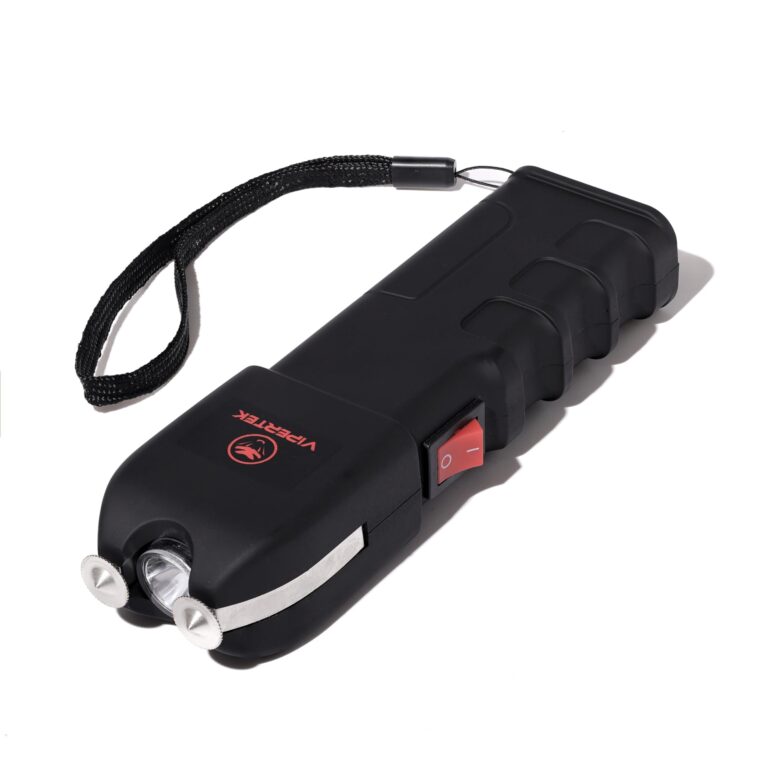Table of Contents
- Rechargeable Stun Guns versus Battery-Powered Models Performance and Reliability Comparison
- Understanding Battery Life and Maintenance Requirements for Stun Guns
- Safety Considerations and Usage Scenarios for Rechargeable and Battery-Powered Stun Guns
- Choosing the Right Stun Gun Based on Your Personal Safety Needs and Budget
- Final Thoughts
Rechargeable Stun Guns versus Battery-Powered Models Performance and Reliability Comparison
When evaluating performance, rechargeable stun guns often offer consistent power output throughout their use cycle due to built-in lithium-ion batteries. This allows users to recharge the device multiple times without worrying about fluctuating voltages that can impact the stun gun’s effectiveness. In contrast, battery-powered models-those dependent on disposable batteries-may suffer from diminished power as the battery life drains, potentially reducing the electrical charge delivered. However, battery-powered stun guns benefit from instant power readiness by simply replacing batteries, which is especially useful if you don’t have access to a charging source.
Regarding reliability, rechargeable models excel in long-term maintenance since their batteries are designed for repeated charges, reducing the waste and cost associated with constantly buying replacements. Yet, they rely heavily on the availability of a charging method, which can be a limiting factor in emergency situations. On the other hand, battery-powered stun guns offer standalone functionality without the need for charging, but this convenience comes with the caveat of needing regular battery replacements to maintain optimal functionality. To summarize:
- Rechargeable stun guns: Consistent power, cost-effective over time, but require access to charging.
- Battery-powered stun guns: Easy battery swaps for immediate use, but can falter as batteries die and incur ongoing replacement costs.
Understanding Battery Life and Maintenance Requirements for Stun Guns
When it comes to maintaining your stun gun, understanding its battery life is crucial for ensuring reliability during critical moments. Rechargeable stun guns typically come with lithium-ion or polymer batteries that offer longer life cycles and can be replenished hundreds of times before performance degrades. However, they require regular charging to prevent battery depletion, and using manufacturer-approved chargers is essential to avoid damage. In contrast, battery-powered stun guns that use replaceable batteries offer the convenience of quick swaps in the field but require you to carry spare batteries and periodically check for corrosion or leakage to maintain optimal performance.
Proper maintenance involves more than just charging or replacing batteries. Consider the following best practices to extend battery life and ensure your device functions when needed:
- Store your stun gun in a cool, dry place to prevent battery degradation caused by extreme temperatures.
- Perform regular functionality tests-including battery level checks-to detect any drop in power delivery.
- For rechargeable models, avoid overcharging and unplug immediately after reaching full charge.
- Keep battery contacts clean and free from dust or moisture to maintain consistent electrical connectivity.
- For battery-powered devices, replace batteries annually, even if unused, to avoid unexpected failures.
By incorporating these maintenance habits, you’ll maximize the lifespan and reliability of your stun gun, regardless of its power source.
Safety Considerations and Usage Scenarios for Rechargeable and Battery-Powered Stun Guns
When handling stun guns, prioritizing safety is paramount. Rechargeable models often feature built-in safety mechanisms like indicator lights and automatic shut-off timers, reducing the risk of accidental discharges and prolonged exposure. Their design typically caters to frequent use, making them suitable for personal defense in urban environments or by security professionals who require a reliable and quick-to-recharge device. However, users should always follow manufacturer guidelines, ensuring the stun gun is fully charged before use and stored securely away from children.
On the other hand, battery-powered stun guns excel in scenarios where long-term storage without frequent maintenance is needed. These units can remain dormant for extended periods without losing power, making them ideal for emergency preparedness kits or infrequent use situations. Still, caution is essential: expired or damaged batteries can lead to malfunction or reduced effectiveness. Some common best practices include:
- Regularly checking battery expiration dates and replacing batteries as needed
- Keeping the stun gun in a cool, dry place to avoid battery corrosion
- Using holsters or secure cases to prevent accidental activation
Choosing the Right Stun Gun Based on Your Personal Safety Needs and Budget
When selecting a stun gun, your personal safety priorities should be paramount. Consider the ease of use, size, and the power output needed for your protection. For instance, if you require something compact for discreet carrying, a smaller rechargeable stun gun might be ideal, offering convenience without sacrificing effectiveness. On the other hand, if long-term reliability during extended use is critical, a battery-powered model provides the reassurance of quick battery swaps without worrying about charging delays. Evaluating your lifestyle and typical scenarios will help pinpoint which type aligns best with your safety strategy.
Budget is another essential factor that often shapes the decision-making process. Rechargeable stun guns generally come with a higher upfront cost but save money over time by eliminating ongoing battery purchases. Meanwhile, battery-powered units are typically more affordable initially but might lead to recurring expenses for batteries. Here’s a quick breakdown to assist your choice:
- Rechargeable models: Higher initial investment, environmentally friendly, convenient charging options
- Battery-powered models: Lower upfront cost, easy battery replacement, potentially higher lifetime cost
Final Thoughts
In the end, choosing between rechargeable and battery-powered stun guns comes down to your personal preferences and intended use. Rechargeable models offer convenience and cost savings over time, making them ideal for frequent use and quick readiness. On the other hand, battery-powered stun guns provide reliable, long shelf life and easy battery swaps-perfect for those who want a device that’s ready to go even after extended periods of storage. Understanding the key differences empowers you to make an informed decision that best suits your safety needs. Stay safe and choose wisely!Check Our Other Blogs
- StunGun – Your Trusted Source for Stun Guns, Laws, and Self-Defense Tips
- PepperSprayLaws – Your Trusted Resource for Pepper Spray Information
- StunGunLaws – Your Trusted Guide to Stun Gun Legality and Safety



